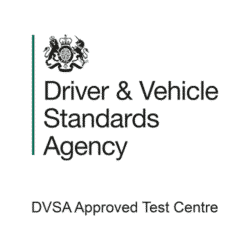The Operator Compliance Risk Score (OCRS) is in place for vehicle operators and fleet managers. Governed by the Driver and Vehicle Standards Agency (DVSA), it is enforced to ensure the professional driving standards, and vehicle quality aligns with the minimum requirements.
Used for each operator licence, the system evaluates the likelihood of a vehicle operator failing to maintain roadworthiness standards, or violating safety regulations. The higher the OCRS, the increased probability of your vehicles being selected for roadside inspections. Anything lower than the standard can be penalised.
The OCRS is based on two sets of information collated
Roadworthiness
This is regarding the vehicles themselves, and how they are roadworthy and adhering to the legal requirements, such as MOT checks. This includes fleet assessments, including walk-around checks.
You will also have a section regarding a combined score, with each banding having different benchmarks as per the banding system.
Points are assigned for defects or offences found, which more points are added as there is an increase in severity. Points will be given when a test, inspection, fleet assessment or desk-based assessment finds a vehicle defect or offence. The number of points given depend on the severity of the offence/defect. So, the more serious the offence, the more points given.
Traffic Score
Orientated towards roadside inspections. This will include looking at Driver’s hours, weighing checks and fleet assessments.

Offence Banding
There is a three-coloured traffic light system, depending on the risk level apparent of the operator:
Green: Low risk
- Roadworthiness- 10 points or below
- Traffic- 5 points or below
- Combined- 10 points or below
Amber: Medium risk
- Roadworthiness- 10.01 to 25 points
- Traffic- 5.01 to 30 points
- Combined- 10.01 to 25 points
Red: High risk
- Roadworthiness- More than 25 points
- Traffic- More than 30 points
- Combined- More than 25 points
This calculation is pending the total of points accumulated, divided by the number of events. The total from this is then used as the score for each section.
The term “Clear events” is used when no issues are found. This can subsequently reduce your score. Any event older than three years are excluded from the score calculation. Operators without any recent interactions with the DVSA are classified as ‘Grey’. Those in the DVSA Earned Recognition scheme receive a ‘Blue’ band, indicating exemplary compliance.
You may also have a “sifted encounter” if having a roadside check. This would be because of factors, such as the vehicle being brand new, or if the vehicle recently had a roadside inspection.
You can find your report and score on the Vehicle Operator Licencing system.
Monitoring and Improving your score
If you want to improve or maintain your score, then you must ensure that your vehicles and drivers are in line with the standards governed by the DVSA. When you receive your OCRS report, it will contain your operator details, and a summary of how the score has been calculated. The report will also show any events that have been removed from OCRS in the last 30 days (4 weeks). Removing negative events will always result in an improvement to the OCRS base score. Removing positive events can in some circumstance have the effect of increasing the OCRS base. The OCRS is updated daily, and all events carry their own timeframe for how long they remain in the OCRS calculation period, this will be up to 3 years (36 months) and has a depreciating term.
It is under the operator’s responsibility to make sure the vehicles are maintained to a high standard, as well as ensuring that all laws, regulations and rules relevant are adhered to.
The DVSA advise that you always check your OCRS regularly, as well as track changes and set targets for improvement. You should also act when you have any negative events logged.
Serious Infringements, such as exceeding driving time limits by 25% or more, operating unroadworthy vehicles, or transporting dangerous goods unsafely, can significantly impact your OCRS, potentially placing you in the ‘Red’ category for 12 months.
Understanding and actively managing your OCRS is crucial for ensuring compliance and minimising the likelihood of your vehicles being targeted for inspections.

Training is vital For Your Team
To reinforce proper training and well-maintained vehicles in your fleet, vehicle checks must be completed to the industry standard. While drivers are taught how to complete vehicle checks through their driver training, it can be easy to become complacent with components of the checks that must be covered.
Drivers are also given training into ensuring they adhere to their drivers hours. Drivers learn about their commitment to Driver’s hours when completing the topic Driver Essentials for the Periodic Certificate of Professional Competence (CPC) training. Being aware as to the consequences of breaking your Driver’s hours is essential, so they won’t receive fines or potentially be prosecuted.










